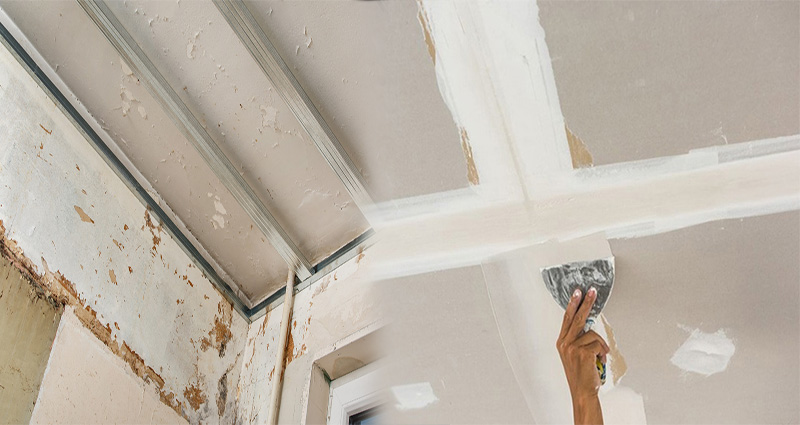Drywall seam repairs are fairly common and are usually very simple if you know what materials to work with. If you find yourself in need of drywall seam repair, you’re not alone—it happens all the time! Drywalls are located in many places throughout homes and buildings, including ceilings, walls and even floors. And while they might seem like they’re always perfectly smooth and solid, this is not always the case. In fact, drywall seams can often crack or become damaged over time due to normal wear-and-tear or even from damage caused by other building materials such as pipes or electrical wires that aren’t properly installed or maintained by contractors who don’t take proper precautions when working on projects within them.
If you find yourself in need of drywall seam repair, you’re not alone.
Drywall is a common building material that can be used for many different things. From walls to ceilings, drywall serves as a sound barrier and helps keep your home energy efficient. With proper care and maintenance, your drywall will last you years!
But what happens when something goes wrong? If you find yourself in need of drywall seam repair, you’re not alone: it happens more often than you might think! Fortunately for those who have experienced this problem before (or those who want to avoid it altogether), we’ve put together some tips on how best go about fixing them yourself with minimal hassle or cost.
Don’t panic! Drywall seam repair is a common problem that can be fixed with a little know-how and patience.
Drywall seam repair is a common problem that can be fixed with a little know-how and patience. Drywall seam repair is not difficult, but it does require some skill and attention to detail. If you are careful, your drywall will look good as new!
Drywall seam repair can be done by anyone–you don’t need to be an expert carpenter or contractor to get the job done right. In fact, if you have ever used tools like hammers or screwdrivers before then you already have all of the skills necessary for drywall seam repair!
Simple Fixes for Small Dings and Dents
If the damage is small and the surrounding wallboard is not damaged, you can repair it yourself.
To repair a small ding or dent:
- Use a putty knife to remove damaged drywall around the hole.
- Fill in the hole with joint compound or plaster, let dry, sand smooth and paint as necessary.
To repair small dings and dents, fill them with joint compound or plaster and let it dry. You can also use this method to fill larger areas where you have lost pieces of drywall. This is best done while the ceiling is still wet.
To repair small dings and dents, fill them with joint compound or plaster and let it dry. You can also use this method to fill larger areas where you have lost pieces of drywall. This is best done while the ceiling is still wet.
If your hole is large enough that you need more than just a dab of joint compound to fill it, consider purchasing plaster instead of joint compound for your repairs. Plaster dries much harder than other types of wallcovering materials and may be better suited for patching holes in ceilings since they are often exposed to moisture from above (like rain) or below (such as water leaking through pipes).
Using Steel Tacks to Repair Large Cracks
When using steel tacks to repair large cracks, it is important to ensure that the tacks are deep enough. If they are not, then you will need to add more tacks and let them dry for 24 hours before removing them. This will ensure that your seam remains strong and durable over time.
Once all of your repairs have been completed, check for touchups that may be necessary before painting over them with primer or paint.
For larger cracks, use steel tacks to help hold the drywall in place while it dries. Make sure the area is clean, then tap nails into the wall every 6 inches. Use a hammer so that they go in deep enough to hold them well but not so far that they leave holes when removed later on. Let everything dry overnight before removing the tacks and finishing up any touchups that may be necessary.
Oops! Click Regenerate Content below to try generating this section again.
Drywall seam repairs are fairly simple if you know what materials to work with
Drywall seam repairs are fairly simple if you know what materials to work with.
- Joint Compound: Joint compound is used for small dings and dents in drywall. You can apply it using a putty knife or trowel, then sand it smooth after it dries.
- Plaster: Plaster is ideal for larger cracks in drywall because it will fill the gap completely, even if there’s a jagged edge around the crack itself–unlike joint compound, which won’t stick very well against rough surfaces like this. You’ll have less cleanup work after applying plaster than when working with other types of fillers such as spackling or filler paste (which contain gypsum).
If you’re looking for a quick and easy way to repair your drywall seams, try out some of these tips. They won’t take long and will save you money in the long run by preventing more serious damage from occurring later on down the road.











